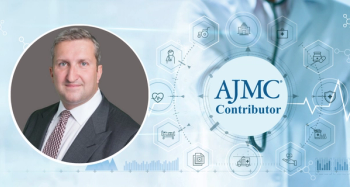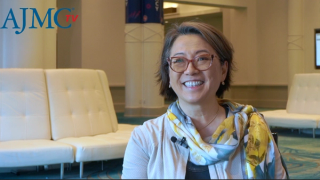
Health Care Delivery
Latest News
Latest Videos

Podcasts
CME Content
More News

As the prevalence of chronic kidney disease (CKD) continues to rise, empowering primary care providers (PCPs) with the tools, training, and collaborative frameworks needed for optimal management is a public health priority, emphasize the researchers.

More than 8 in 10 patients with rheumatoid arthritis were taking 5 or more medications at once, a practice linked to older age, multiple comorbidities, and more than 2000 potential drug-to-drug interactions.

The risk of fatty liver disease is especially high in patients with multiple cardiometabolic risk factors who undergo gallbladder removal, according to research from South Korea.

High-volume cancer centers utilizing neoadjuvant chemotherapy (NACT) significantly reduce surgical mortality and enhance survival rates in patients with advanced ovarian cancer.

Medicare Advantage outperformed traditional Medicare on clinical quality measures before and during the COVID-19 pandemic; mid-pandemic, however, traditional Medicare narrowed the gap on some in-person screenings.

A new partnership delivers a scalable Fast Healthcare Interoperability Resources solution to help payers meet CMS' Interoperability and Prior Authorization Final Rule by 2027.

A real-world study found that semaglutide prescriptions were associated with improvements in weight, blood pressure, and cholesterol, but also a $80 monthly rise in health care spending outside of drug costs.

A new American Heart Association initiative is working to increase screening for lipoprotein(a) (Lp[a]) at community health centers nationwide to help address undetected cardiovascular risk.

Personalized expert instruction informed by artificial intelligence (AI) data improved surgical performance and skill transfer more effectively than AI feedback alone in a randomized trial.

As the demand for mental health care grows, calls for restructuring what some consider a broken system are louder than ever, with overburdened providers and patients' needs constantly evolving.

A national poll found the majority of Americans believe hospitals should neither sell nor profit from fast food, with strong support for healthier food environments in medical settings.

In this second part of his interview with The American Journal of Managed Care®, Sanjay Doddamani, MD, MBA, a former senior advisor to CMMI and founder and CEO of Guidehealth, continues a dialogue on the future of value-based care and the promise—and limits—of AI-enabled innovation, reflecting on challenges like rising Medicare costs and patients’ growing financial burdens.

In this subanalysis of data from the ADjoin trial of lebrikizumab, the interleukin-13 receptor inhibitor that is also a monoclonal antibody showed itself to be effective over the long term in patients with atopic dermatitis on maintenance therapy.

During the Addressing Cardiovascular Risk and Intervening Early webinar, experts discussed innovative strategies for cardiovascular disease prevention, emphasizing risk assessment, lifestyle changes, and collaborative care to improve patient outcomes.

Large language models (LLMs) such as GPT-3.5 and GPT-4 may offer a solution to the costly and inefficient process of manual clinical trial screening, which is often hindered by the inability of structured electronic health record data to capture all necessary criteria.

As rates of childhood obesity rise, clinicians call for increased data collection to support insurance coverage and safe use of glucagon-like peptide 1 (GLP-1) medications in children under 12 years.

Given trends in cost and use, insulin out-of-pocket cost reduction policies would be more efficient if they targeted members in high-deductible health plans with savings options and low-income patients.

The Commonwealth Fund’s updated July 2025 brief on maternal mortality highlights how systemic disparities, Medicaid coverage gaps, and behavioral health challenges continue to drive poor maternal and infant outcomes across the United States.

Key legal, ethical, and compliance considerations for managed care professionals navigating the evolving landscape of psychedelic-assisted therapy include regulatory risks, data privacy challenges, reimbursement limitations, and the need for culturally informed care models.

Discover the latest insights on pediatric-onset multiple sclerosis, emphasizing early intervention and high-efficacy therapies for improved outcomes in children.

Improving health literacy is essential for promoting health equity, reducing preventable illness, and making health care more effective.

Social risk factors significantly increase the likelihood of developing long COVID, highlighting the urgent need for equitable health care and support systems.

In a webinar, experts discussed cardiovascular disease prevention strategies, emphasizing personalized risk assessments and emerging treatments to combat this health crisis.

During a visit to AtlantiCare, CMS Administrator Mehmet Oz, MD, MBA, called for rural health systems to modernize IT infrastructure through the $50 billion Rural Transformation Fund, including through artificial intelligence (AI).

Although artificial intelligence (AI) is quickly becoming a tool used in health care, the human aspect of health care is still necessary for continued care.
















































